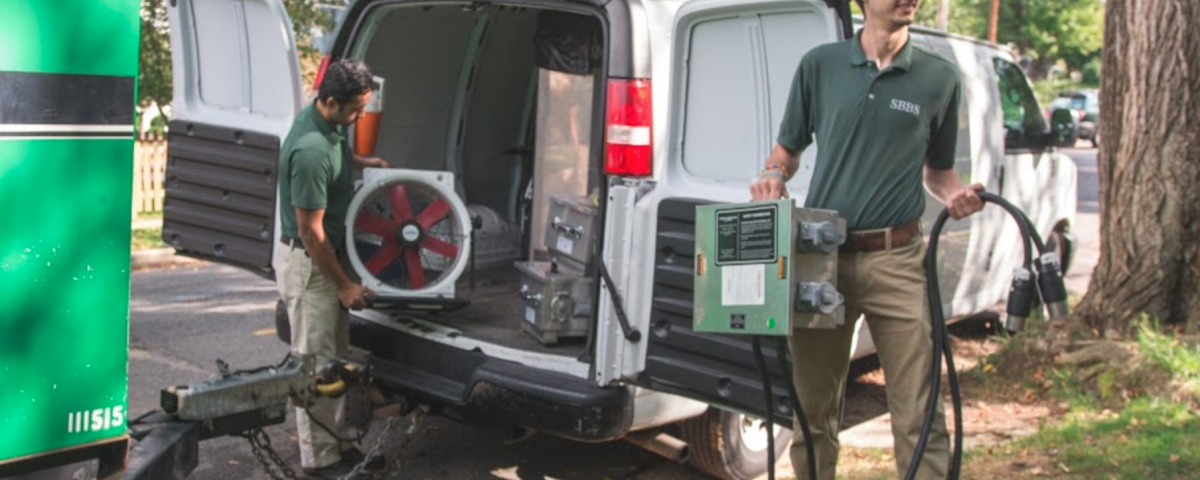
4 Tips to Rodent-Proof Your Home
October 4, 2020
Washington, DC Ranks 3rd in 2021 National Bed Bug Survey
February 3, 2021Need to Get Rid of Bed Bugs? Heat Treatment versus Pesticide Treatment

by Jesse Jardim
When you find out you have bed bugs in your home you want them out…immediately! In hopes of helping you make an informed decision quickly about the best treatment method to pursue, I’ve put together a comparison of conventional chemical treatment and heat treatment for bed bugs.
First, some background. Chemical bed bug treatment has been around for over 80 years, since the discovery of DDT’s effectiveness as an insecticide. Now, however, DDT is banned by the EPA for its harmful impact on wildlife. Other pesticides are used today, primarily those containing natural pyrethrins and synthetic pyrethroids. These chemicals have varying degrees of effectiveness and safety, and many populations of bed bugs have a high degree of pythreroid resistance. The major non-chemical, non-toxic alternative is heat treatment for bed bugs.
Let’s look at how bed bug heat treatment and chemical treatment compare in critical areas:
Effectiveness
The primary consideration in arranging bed bug treatment is whether the choice used will even work. Bed bugs in all life stages, from egg, to nymph, to adult will die immediately when exposed to temperatures of 125℉ or higher. SBBS heat treatment warms each room to a killing temperature of 135℉ for 3 hours, adjusting the positioning of the heaters and fans to target problematic spots. Pesticide treatment can have lower effectiveness. According to the EPA, “where resistant bed bug strains exist, these treatments may cause them to move to a new hiding place or temporarily flush them out of existing locations. Some bed bug populations have become resistant to pyrethrins and pyrethroids.” Additionally, as pesticide treatments only kill live bugs, not eggs, follow-up treatments will be needed to kill newly hatched bugs within 2 weeks.
Safety
You want to kill bed bugs, but you don’t want to have any risk for family members, especially small children and pets. Pesticide treatments are poisons. They’re targeted at specific pests, but they are nevertheless hazardous. Professional heat treatment is totally safe. When the room cools back to normal, all bed bugs and eggs are killed, with no lingering evidence of treatment.
Discretion
Although having bed bugs is a traumatizing experience, bed bugs are not an indication of a dirty home. However, people often feel embarrassed about having bed bugs and certainly don’t want to advertise their situation to their friends and neighbors. Heat treatment has no lingering smell, while chemical treatment leaves a strong and clearly identifiable odor that can last for hours or days. Furthermore, Superior Bed Bug Solutions uses the acronym SBBS on all of our uniforms and vehicles to ensure the client’s privacy. The generators and heaters we use look like construction equipment.
Environmental Impact
DDT is no longer used for bed bugs because its toxins that affect the nervous system could accumulate in the fatty tissues of small to large mammals such as mice and deer, causing convulsions, liver tumors, and death. Modern pesticides are safer; however, the National Pesticide Information Center has environmental warnings about pyrethrins, “Pyrethrins are practically non-toxic to birds but highly toxic to honey bees.” Most chemical bed bug treatments on the market have these harmful components. Heat treatment is totally safe for the environment. The maximum temperature used is 135℉.
Convenience
Both pesticide and heat treatment require some preparatory work. Heat treatment requires the removal of items that could be damaged or dangerous when exposed to high temperatures, such as candles and chocolate. Technicians use powerful commercial heaters and fans to maintain target temperature in the home. Heat treatments can take 5 to 8 hours, depending on the size of the home.
Pesticide treatment requires putting food and delicate items in sealed containers to avoid getting a build-up of the chemicals. Generally, residents are advised to wait at least 5 hours before reentering. Multiple chemical applications are needed, often requiring six or seven visits from the pest control technician who will apply harsh chemicals each time.
Cost
Heat treatment costs about the same as chemical remediation. However, because pesticide treatment doesn’t kill bed bug eggs it requires multiple visits.
